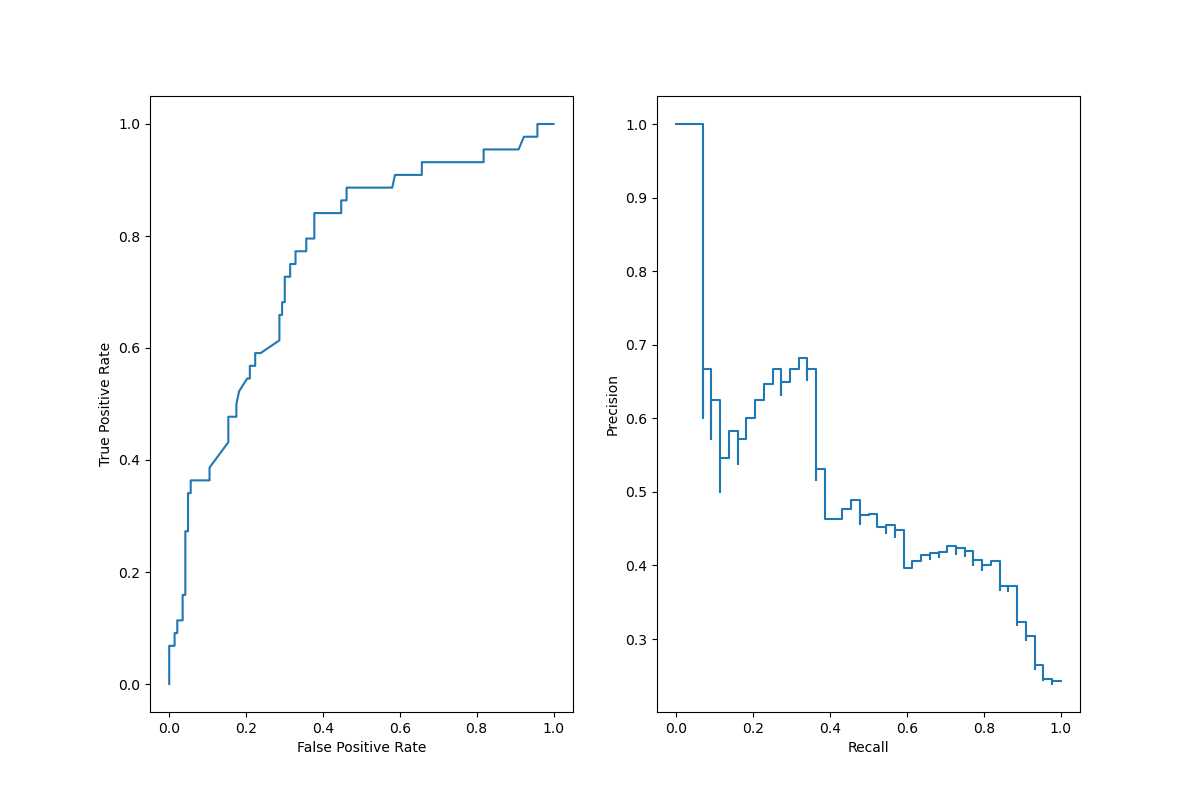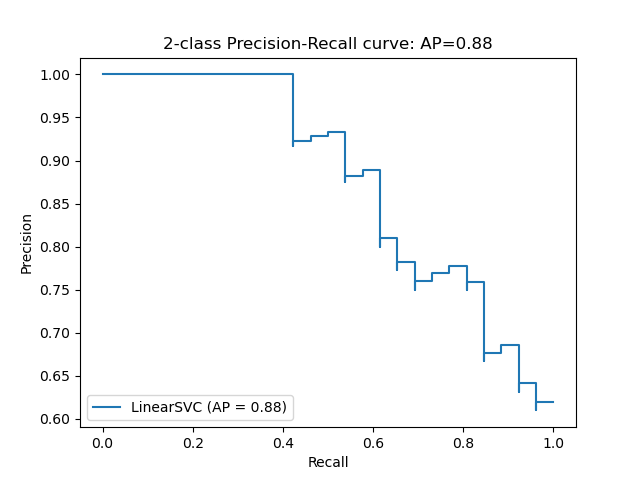sklearn.metrics.precision_recall_curve?
sklearn.metrics.precision_recall_curve(y_true, probas_pred, *, pos_label=None, sample_weight=None)
計算不同概率閾值的精確召回對
注意:此實現僅限于二進制分類任務。
精度是tp /(tp + fp)的比率,其中tp是真正例的數目,fp是假正例的數目。從直覺上講,精度是分類器不將負例樣本標記為正例的能力。
召回率是tp /(tp + fn)的比率,其中tp是真正例的數目,fn是假負例的數目。直觀上,召回是分類器找到所有正例樣本的能力。
最后的精度和召回值分別為1.和0,并且沒有相應的閾值。這樣可以確保圖形從y軸開始。
在用戶指南中閱讀更多內容。
| 參數 | 說明 |
|---|---|
| y_true | array, shape = [n_samples] 真正的二進制標簽。 如果標簽既不是{-1,1}也不是{0,1},則應該明確給出pos_label。 |
| probas_pred | array, shape = [n_samples] 估計的概率或決策函數。 |
| pos_label | int or str, default=None 正例類別的標簽。當pos_label = None時,如果y_true在{-1,1}或{0,1}中,則pos_label設置為1,否則將引發錯誤。 |
| sample_weight | array-like of shape (n_samples,), default=None 樣本權重。 |
| 返回值 | 說明 |
|---|---|
| precision | array, shape = [n_thresholds + 1] 精度值,以使元素i為score>=thresholds [i]且最后一個元素為1的預測精度。 |
| recall | array, shape = [n_thresholds + 1] 降低召回值使元素i為score> = thresholds [i]且最后一個元素為0的預測的召回。 |
| thresholds | array, shape = [n_thresholds <= len(np.unique(probas_pred))] 用于計算精度和召回率的決策函數的閾值不斷增加。 |
另見:
根據預測分數計算平均精度
計算接收器工作特性(ROC)曲線
示例
>>> import numpy as np
>>> from sklearn.metrics import precision_recall_curve
>>> y_true = np.array([0, 0, 1, 1])
>>> y_scores = np.array([0.1, 0.4, 0.35, 0.8])
>>> precision, recall, thresholds = precision_recall_curve(
... y_true, y_scores)
>>> precision
array([0.66666667, 0.5 , 1. , 1. ])
>>> recall
array([1. , 0.5, 0.5, 0. ])
>>> thresholds
array([0.35, 0.4 , 0.8 ])


